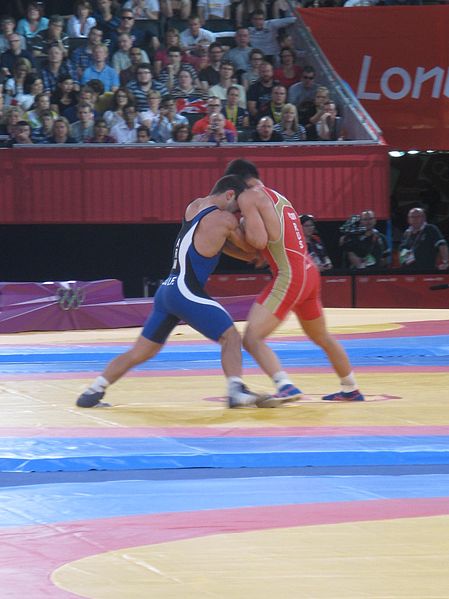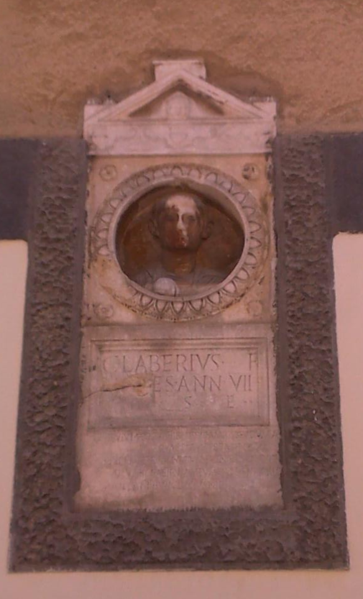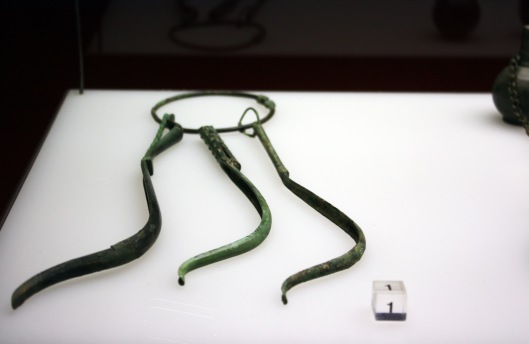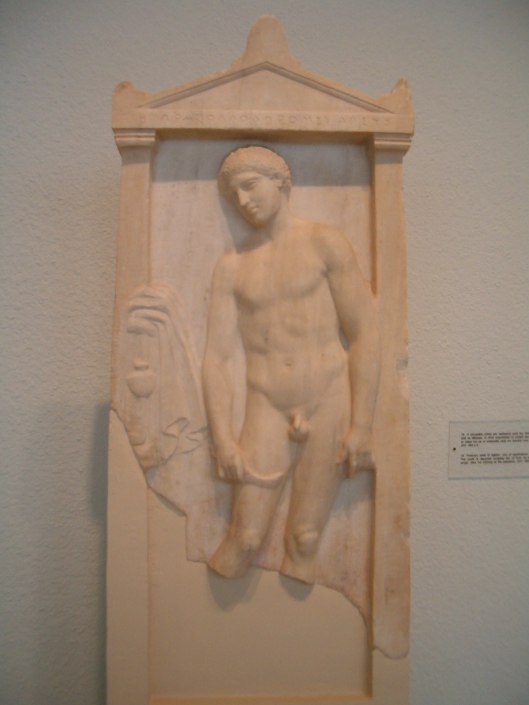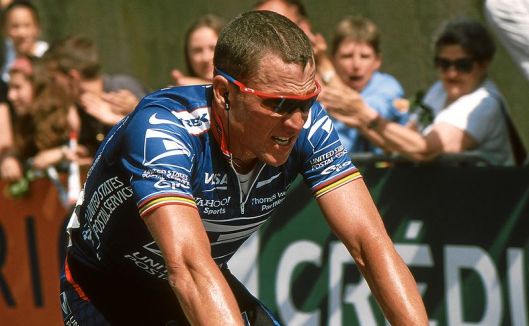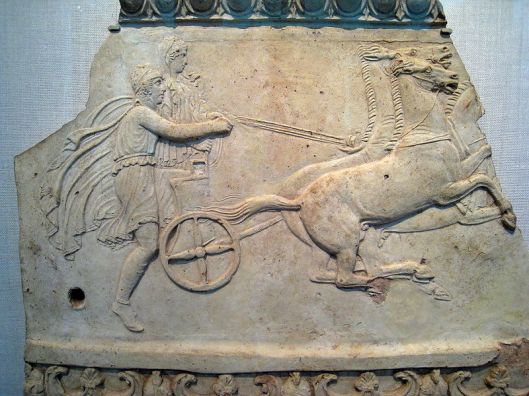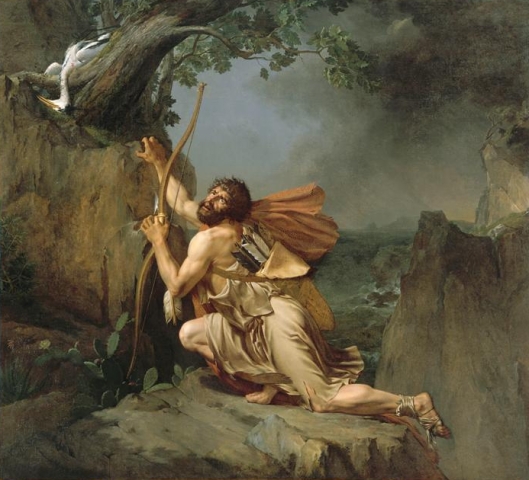The London 2012 legacy
Stories about the Olympic legacy are still appearing pretty regularly in the British press, many of them focused on funding for School sports:
The Observer, 26 January 2013: Fury over lost London 2012 Games legacy as school sport funds dry up.
BBC, 19 April 2013: MPs warn on London 2012 volunteering legacy.
Independent, 28 April 2013: Baroness Sue Campbell: ‘We have wasted the Olympic legacy’.
Festivals and gymnasium education in the ancient world
In some respects the relationship between festival contests and ‘school sports’ in the ancient world was not dissimilar to what we are familiar with. But it’s hard to find parallel concerns about the idea that a specific festival should bring social benefits, for example by prompting an improvement for sport at school level.
Boys and young men from elite families received a significant part of their education in the gymnasium, most importantly for two years around the age of 18 as ‘ephebes’. This system of ephebic training was formalised in Athens in the fourth century BC, and spread to cities right across the Greek speaking world; it persisted into the Roman Empire. Ephebic training included athletic instruction in the events which were contested in the Olympics and in the hundreds of other athletic contests of the eastern Mediterranean. These skills were standardly tested out in competitive festivals held between ephebes in the gymnasium at the end of each academic year. The ephebic system must have been an important starting-point for athletes who went on to distinguished careers as professional sportsmen.
It’s not difficult to find generalising claims about the inspirational capacity of the athletic festival. Lucian, in his Anacharsis (written in the second century AD) writes as follows (albeit in a dialogue where the speaker quoted below, Solon, is repeatedly contradicted and mocked by his interlocutor, the Scythian wise man Anacharsis):
For we think, Anacharsis, that their enthuasiasm for athletic training will increase, if they see best athletes being honoured and proclaimed among the Greeks…And so many of the spectators, those who are not too old for training, go away from seeing such things not a little in love with hard work and athletic virtue. (Anacharsis 36)
Having said all of that , it is also clear that gymnasium education was in some respects very far removed from the culture of the full-time athletes who competed in high-profile festivals. Ephebic training could include all sort of other skills which were pretty much irrelevant to the Olympic tradition: for example we hear regularly of instructors in grammar or rhetoric being employed in gymnasia, and instructors in various military skills. And we have evidence for some odd contests at the end-of-year gymnasium festivals–including contests in ‘discipline’ (eutaxia) ‘good condition’ (euexia), hard work (philoponia); also contests in ‘reading’ and ‘writing’ or even ‘learning’ (polymathia)–more like a school sports day or speech day than an Olympic programme.
Anyone involved in this system would have been perfectly well aware–as most people surely are today, despite the idealistic attempt by British journalists and politicians to reinforce the idea of an Olympic legacy for school sports–that there are limits to how far you can ever expect professional sport to have an influence on athletic education in schools. To some extent they will always be different worlds.
Ephebic inscriptions
We know about ephebic training partly from the many inscriptions recording the names of ephebes and their instructors, or in some cases recording rules for the gymnasium. There are hundreds of surviving gymnasium inscriptions, but they’re quite hard to get hold of in translation, either online or in the standard athletic sourcebooks. Miller’s sourcebook (Arete, 3rd edition, 2004: numbers 184, 185, 187) has some of the most important texts, but what doesn’t emerge clearly from that selection is the way in which each single inscription tended to be part of long series of inscriptions dealing in a formulaic way with similar subject matter year after year (for example with a new inscription put up at the end of each academic year).
The most detailed series of these inscriptions comes from Athens in the Roman Empire. (Good discussion by Kennell in Pakonstantinou (ed.) Sport in the Cultures of the Ancient World).
Here’s one (IG II2 2044):
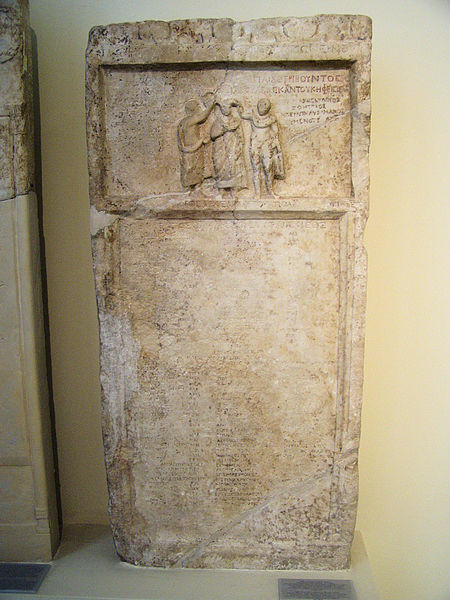
And here’s a translation of an extract from a similar text from the same series (IG II2 2021):
The Council of the Areopagus and the Council of the 600 and the people of Athens honour the cosmêtês (i.e. head of the gymnasium), Heliodoros of Peiraios…
In the archonship of Polybius son of Metrodorus from Sounion the ephebes inscribed their own names and the names of their instructors.
The instructors:
Plato of Aithalidai;
as hêgemon, Zosimos of Besa;
as athletic trainer (paidotribês), Demetrios son of Isigenos, of Rhamnous;
as teacher of grammar, Aphrodeisios son of Heliodoros, of Peiraios;
as weapons instructor, Dionysios son of Antipater, of Azenia.
The ephebes:
Cheilon son of Eukarpos;
Lysimachos son of Eukarpos;
Agathopous son of Eukarpos;
Archimedes son of Antiochos;
Zopyros son of Heliodorus;
Aristoboulos son of Arist…;
Theologos son of Eraton;
Hedylos son of Sozomenos;
Chryseros son of Karpodoros;
Apollonios son of Zosimos;
Hilaros son of Eisidoros;
Hymenaios son of Epaphrodeitos etc. etc.
You can see here from the list of instructors how the gymnasium is about very much more than just athletic training: it’s about literary and military education too. In that sense at least it’s quite far removed from the world of the athletic festival.
Gymnasium education and ancient elitism
One of the other striking things here is the prominence of the names of ephebes (which goes on a long way beyond where I’ve stopped). Membership of the ephebeia–especially the oldest ephebeia of all, in Athens–brought considerable social cachet, and was available only to those from wealthy families. The text doesn’t at first sight make for enthralling reading, but the cataloguing effect must have been impressive–it conjures up an impression of an elitist institution which was alive and well many hundreds of years after it was first founded–especially when you imagine it standing side-by-side with dozens of other similar inscriptions from the ephebes of previous years. These kinds of inscriptional catalogue are crucial to our understanding of ancient athletic history, but they tend to be missed out of the story in non-specialist treatments in favour of more glamorous sources…
This elitist character of ancient gymnasium education is another very basic reason why it’s hard to imagine any ancient equivalent to our own anxieties about Olympic legacy. We do occasionally see evidence for cities taking great care over the choice of publicly employed instructors in their gymnasia. But there’s nothing in the ancient world to match our own worries about the funding of education (sporting and otherwise) for all social levels, which is clearly one of the things driving the anxiety about this issue in recent media coverage in 2012 and 2013.


